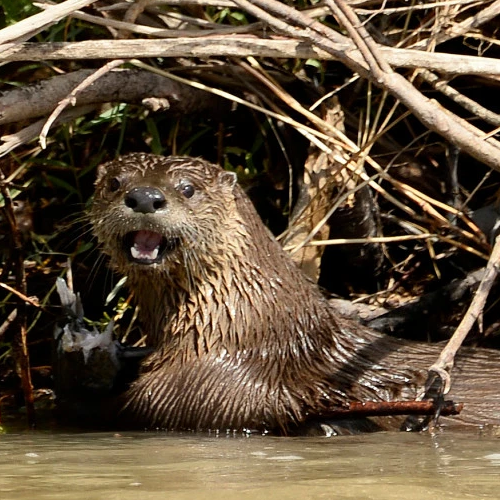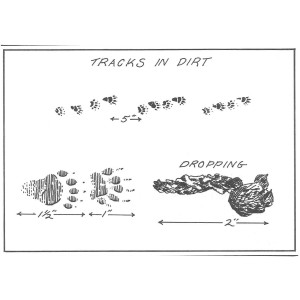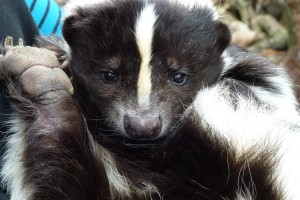Trappers and Legislative Action
By Kent Weil
Want to strike fear in the heart of a trapper? I know trappers that would rather stick their arm in a 330 Belisle than be involved with anything that strikes of political action. And yet, by not getting politically involved we are forfeiting one of our best and least expensive tools to promote our sport.
The results can be very productive and gratifying. All it takes is some direction and organization.
Let’s stick with political action in your state. Things at the national level are on a whole different scale entirely. To narrow it even more, let’s consider only political action as it affects the legislative process. Let’s define “legislative action”, for the purpose of promoting our interests in your state legislature or assembly, as any organized political action that favorable impacts legislation of interest to trappers. That means passing bills that positively affect trapping and defeating bills that have an adverse affect on trapping.
Okay, now we know what we want to do but how do we go about achieving results?
This will be a bit tedious, and if you want to you can skip to the next section, but we should first examine the process by which bills become laws. The process will vary some from state to state, but in general the steps will be similar. There are pressure points available at each step that can be used by trappers to achieve the results we desire. You can break the process into five steps:
1. Formulate a bill to be introduced: Starting with a broad conceptual idea of what the bill should accomplish, work with your state game agency, national trapper organizations, your state trapper association, the National Assembly of Sportsmen Caucus or other sportsmen’s group to fine tune the details. This is the time to start developing a coalition that will support you later in the legislative process. Things to consider:
A. What interests groups will be favorable? There’s no use introducing legislation unless there is support. Talk to potentially supportive groups before introducing the bill. They may have some great ideas. They may also wish to change the bill so that they can support it. Remember, ALL politics is about compromise. As a friend of mine says, “sometimes you have to go along to get along”.
B. What groups will oppose you? Some are obvious (HSUS comes to mind), but you will be surprised sometimes at who will oppose you. It doesn’t hurt to feel out those groups you think will be supportive to make sure that is the case. Just because they supported you in a previous action doesn’t mean they will support this one. Be aware that every group has its own agenda. You don’t want to be blindsided later in the process.
C. Is your state game agency on board with the bill? Having the state game agency on your side makes a powerful argument. The importance of having a close working relationship with your state game agency cannot be stressed enough. One of the great plusses trappers have going for us is that wildlife science is usually on our side. The state game agency will testify on the merits of the bill in question. You need to know in advance where they stand. They will often have suggestions for improvement that might let them support a bill they might otherwise oppose.
D. Is there a fiscal impact? It is difficult to find support for passing legislation that costs the state lots of money. If the bill is going to cost a lot of money, how is the state going to fund it? Legislators will surely ask this question so you will need an accurate answer.
2. Bill is introduced into the legislative body: Now we have to introduce our bill. You will need to decide which legislative body is the best place for introduction (in Illinois we have good sponsors in both our House and Senate so we often introduce the bill in both chambers simultaneously). The choice of which politician to be offered sponsorship can be critical. Often, each body has a member who is known for sponsoring pro-sportsman legislation. This person already has developed credibility in this area and may be offended if you go to someone else. If possible, use them (if you need help in identifying this person, ask your state game agency or look up the chief sponsor of previously favorable bills). Your sponsor will be the one that sees to it that the bill in written up with the correct language. After being introduced, the bill will be assigned to a committee where the general public will be allowed to comment on the bill.
3. Bill is heard in committee: This is an arena where members can have a substantial impact. The general public is allowed to comment (testify) in the committee hearing. As a witness, you can testify in various ways. You can go to the committee meeting and present your position orally (here is a link that does a good job of explaining how to do this: http://www.leg.state.mn.us/leg/faq/faqtoc.aspx?id=117); you can file written comments; or, in many states, you can file a “Record of Appearance Only”. Often this record of appearance can be filed electronically, allowing you to contact your members and have them to log into the committee site to testify. You can run up some numbers real fast this way, and if you can reach your members via email on short notice the results can be especially significant.
4. Bill is heard on the floor: After passage out of committee, the bill goes to the chamber floor. Amendments may be added to the bill at this time, after which the bill will be heard for final passage. At this point members should contact their elected representative and let them know where they stand on the bill. A phone call is good, an email is okay, but a written letter trumps everything. Get your members to do what they can, but I can tell you from personal experience that on a relatively non-controversial bill (and let’s face it, as much as a trapping bill means to us, it isn’t an abortion bill), a legislator will be lucky to receive a scant handful of letters. There is a tendency in any organization to try to get their members involved by using form letters or pre-printed postcards because it is easier than a more personal contact. Don’t do it. If you are going to send written correspondence, it needs to be personal. Believe me, legislators know when they get the exact wording on each piece of mail and they discount if accordingly. Better a fewer number of pieces of mail that will have more impact. Don’t underestimate your ability to have a real impact here. Most legislators know very little about trapping and will often take their position based on what they hear from their constituents. These legislators want to be re-elected so they tend to be pretty responsive to people from their districts. If you want to be really effective, don’t just tell the legislator your position but explain to him just why you feel the bill is good or bad. Be polite and concise, but use this opportunity to educate them.
4. Repeat. If your state legislative body is bi-cameral (two chambers such as a House and a Senate), the bill will need passage out of this body in order to be sent on to the governor. Basically, you will repeat sections 1-3.
5. Bill goes to the Governor: After a passage by the legislature, the governor typically has a certain amount of time in which to sign the bill. As in the case with legislators, it is useful to let the governor’s office know where you stand on the bill. An individual will not have as much effect here as with their legislative representative, but it certainly cannot hurt and at least you let the executive office know that trappers in your state do have a voice and aren’t afraid to us it.
Okay, now that we know how a bill becomes law and have examined ways we can impact its passage, how can we put it all together in a cohesive package? In other words, how do we organize our efforts?
Responsibilities exist on two levels:
1. Individual Responsibility: Individual trappers have to take some ownership of this process. You state organization can only be effective if you do your part.
A. Each trapper needs to become more politically aware. You should know who represents your district in the state legislature and how to contact them. This is easy to do over the internet these days. Most states have a site where you can type in your address and have the site tell you which legislators represent you and how to contact them.
B. Trappers need to, at the very least, join a state association. With your help, the association can do a much better job of tracking and organizing legislative action than you can on your own. One of your best tools is to provide the organization with your email address. Whether you like it or not, electronic correspondence is a necessity in political action today. The association needs to be able to contact you on short notice and as inexpensively as possible.
C. Members should answer the call from the state organization when asked for assistance. Call your state senator, write a letter to your governor, and fill out an electronic witness slip – whatever the association needs. It isn’t that tough. Even writing a short note to a legislator stating your position shouldn’t take you more than 5 minutes or so.
2. Association Responsibility: It is the responsibility of the state trapper’s organizations to develop a means by which they can efficiently introduce and track legislation, as well as notify members and provide them with the information needed to take legislative action. In order to develop an effective organized legislative action, at the very least the association must have the following components:
A. The association must maintain an accurate list of contact information for members – especially email addresses. It is difficult to stress how import electronic contact is to expedite legislative alerts. Often, information received by the association regarding a bill has a very limited window of response time. Regular mail takes too long and is too expensive, yet the association can contact its members via email in a matter of minutes allowing ample time for the member to take appropriate action.
B. The association must devise a method by which they can track legislation. The association needs to know, daily, of the status of legislation they are tracking as well as the general level of opposition. This can be done in a variety of ways that can be tailored to the association’s resources and abilities. Your state game agency will usually already be tracking this legislation, and a member or officer can be designated as a liaison to the state game agency to receive information updates on the status of the bill. Members designated by the association can do daily checks on legislation. This information is typically available online. Some states will have a system by which you can register and receive email alerts as the status changes on a bill. Other allied organizations may also already have a system of tracking bills that the association can tap into. Just remember that what is important to you as a trapper may not be as important to another sportsman’s organization with a different agenda.
C. The association must educate their membership and provide direction on issues affecting trappers. You can have the most accurate and complete list of members and the best trapping bill ever, but if you cannot connect the two you haven’t accomplished much. Most members will know little about the legislative process and will, in all reality, care even less. Your job is to change their viewpoint. It starts by getting the members to understand that, with a little effort, they can actually make a difference. Along with a request for action, you must provide the members with detailed information on how they can be effective. For example: Say a committee is hearing a trapping bill and the association wants it’s members to testify by utilizing electronic witness slips. Sending an email simply asking members to go a website and testify in favor of the bill is not properly utilizing your membership. While it may be easy for you, for someone who has never testified on a bill it might be a bit daunting. You can make it much easier by sending detailed instructions on completing the witness slip (complete with a web link to the site) along with your request for legislative action. Requests for emails, phone calls, or letters can be handled much the same. Provide the member with a sample script (making sure the member understands that they are to use their own wording) along with a request for action. The easier you make it to understand the action the more successful your action will be.
D. The association must publicize their successes. Let your members know that their efforts were successful. Give them detailed information showing just how their action helped. And don’t stop here! Make sure that other sportsmen’s groups know just how important the trappers were in passing a bill. The days when trappers could get away with being shy and secretive are over. Make sure every player in the legislature knows what you did. Make sure that the national trapper’s organizations know too – that’s why you have NTA and FTA representatives on your board.
In the 45 years or so I have been reading trapping magazines this is a subject rarely touched on and never satisfactorily explained, yet utilizing the legislative process is vital to the continuation of our sport. Believe me, the anti’s have a thorough understanding of this and use it against us all over the country.
This is my attempt to distill a very complicated process down to essential component parts. Like any complicated process, there is usually more than one path to a successful conclusion so you may disagree with the path I outlined. Not a problem. Get involved and show me there is a better way.
If you are an officer or director of a state association that has no plan of action to support pro-trapper legislation you are doing your members a disservice. Start one – you owe it to your membership.
If you are a trapper who does not belong to a state association – shame on you. How can the association provide effective support for our sport if you refuse to give them the tools to help?
Please, get involved. One of the thing I love about trappers is that they are independent and innovative as all get out (did I mention, uhhh, frugal?). These are strengths we can use. We will never beat HSUS with money. We can beat them by educating our state legislators on the merits of trapping and showing them that trappers can speak with one very loud voice when necessary.
After all, we’re right and they’re wrong!









































